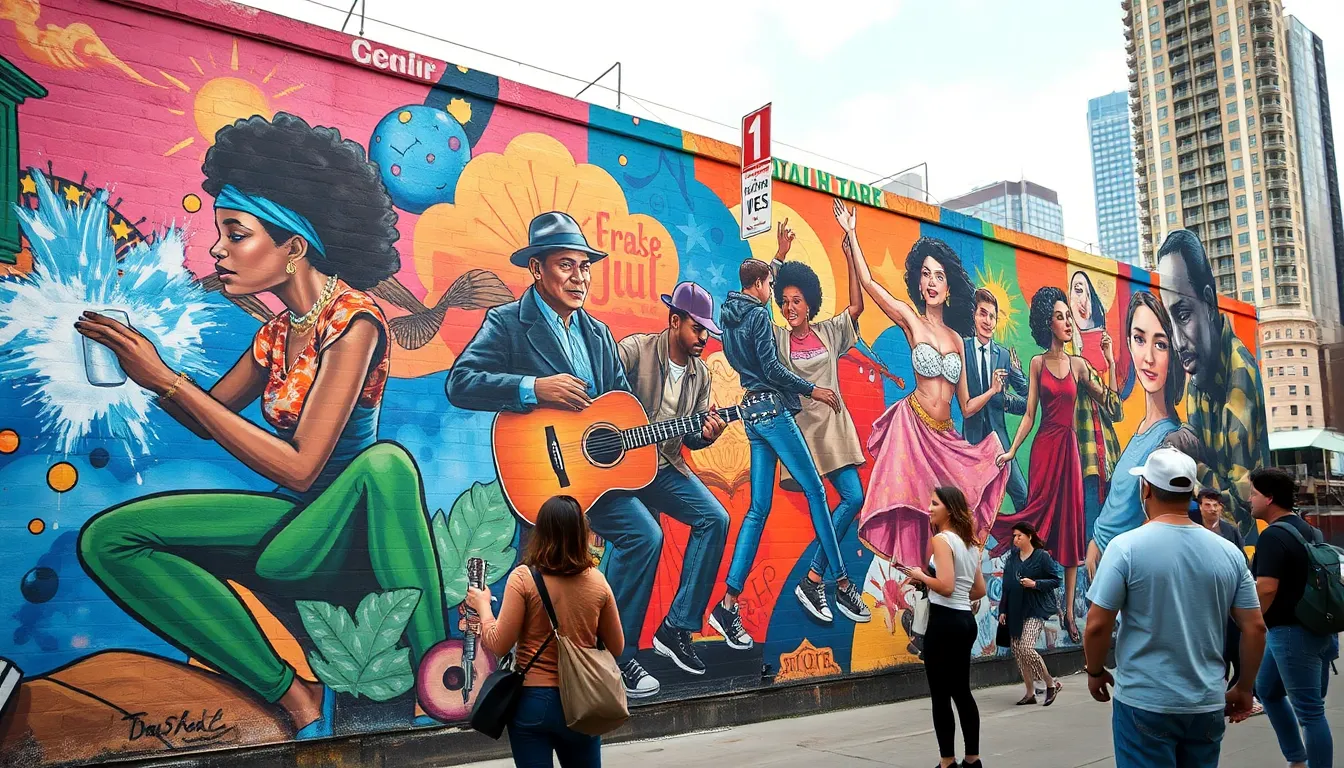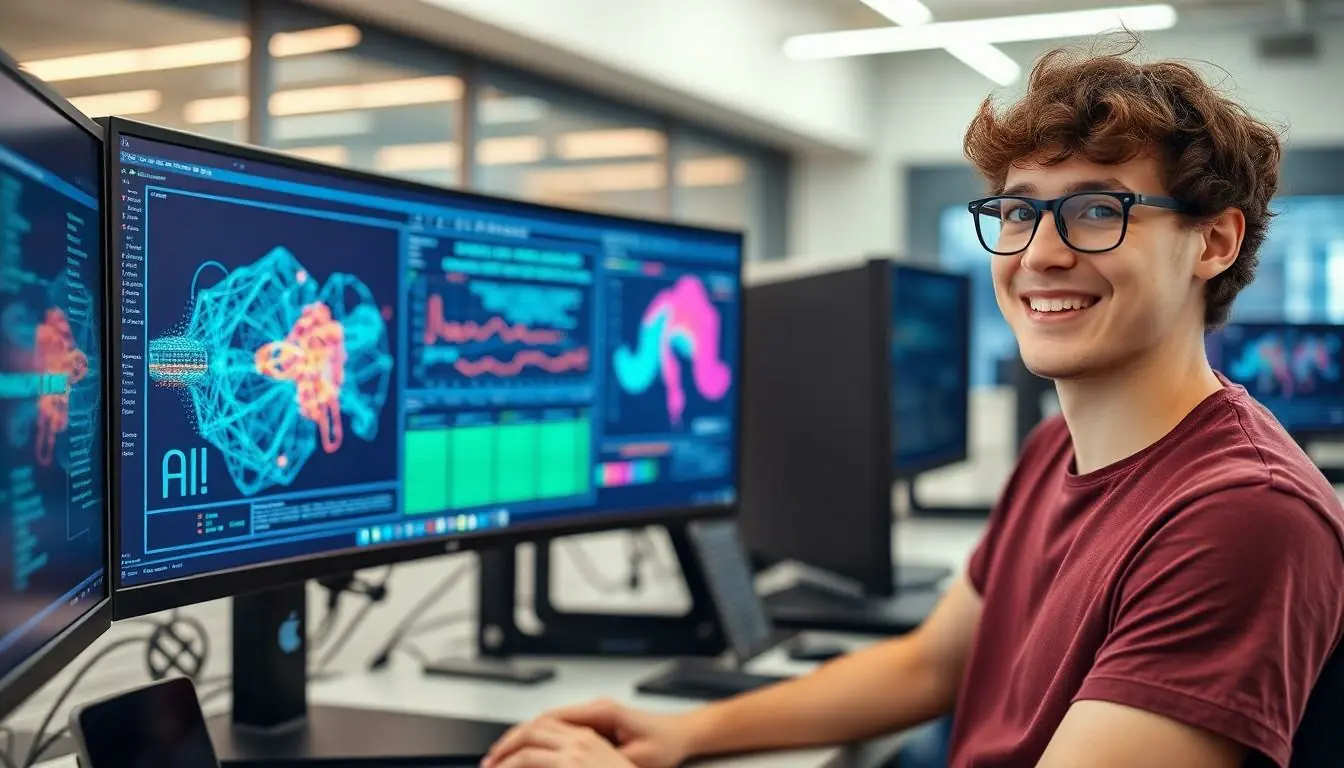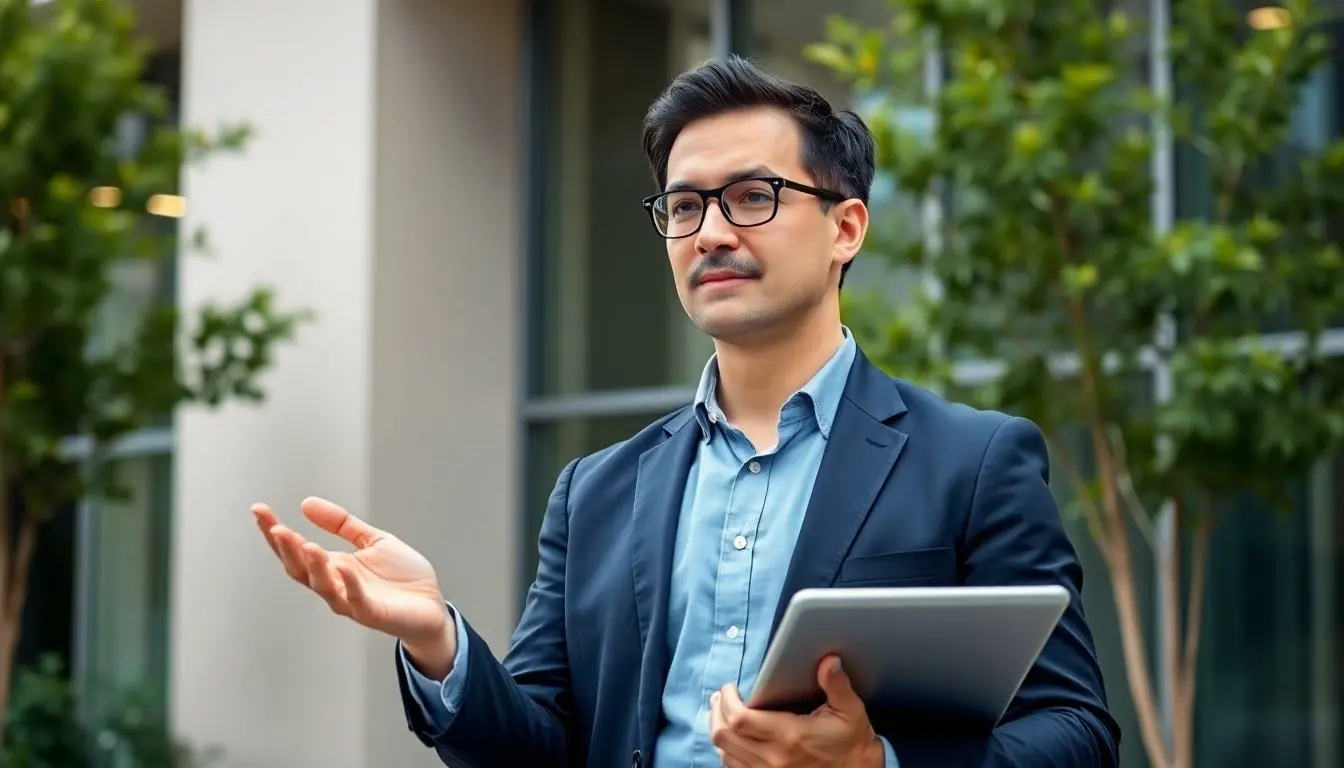Table of Contents
ToggleArt and society go together like peanut butter and jelly, each enhancing the other in unexpected ways. From the vibrant murals on city walls to the thought-provoking installations in galleries, art reflects the pulse of society, capturing its hopes, struggles, and dreams. It’s not just about pretty pictures; it’s a powerful tool that can spark conversations, challenge norms, and even inspire change.
In a world where everyone seems to have an opinion, art offers a universal language that transcends barriers. It invites people to see through different lenses, encouraging empathy and understanding. So, whether it’s a cheeky political cartoon or a heart-wrenching performance piece, the nexus between art and society is alive and kicking, ready to inspire and provoke. Dive into this colorful exploration and discover how art shapes our lives and, in turn, how society shapes art.
Understanding Art And Society Nexus
Art and society share a profound bond that influences people’s lives and perspectives. Their interconnectedness reveals much about collective identities and cultural expressions.
Historical Perspectives
Historical context showcases how art mirrors societal shifts. Numerous movements, such as the Renaissance and Romanticism, reflect evolving values. Artists like Michelangelo and Van Gogh addressed themes of human experience, war, and love, resonating with contemporary audiences. These artistic expressions often sparked debates and inspired reform, challenging norms of their times. They documented events, including revolutions and social struggles, revealing the societal landscape. Through art, individuals grasped complex emotions and narratives, fostering a shared understanding across generations.
Contemporary Views
Contemporary discussions center on art’s role in social justice and cultural identity. Current artists engage with issues like inequality, climate change, and technological advancements. Street art and digital installations facilitate conversations on critical topics, bringing attention to marginalized voices. Social media platforms amplify these messages, allowing broader audiences to participate in dialogues. Art today serves as both a catalyst for change and a reflection of societal complexities. This reality illustrates how art continues to evolve while fostering community engagement and understanding.
The Role Of Art In Society

Art profoundly impacts society, serving as both a mirror and a catalyst. It reflects shared values while prompting critical discussions about the human experience.
Cultural Reflection
Art embodies the cultural identity of communities, offering insights into traditions and societal norms. It captures the essence of different eras, displaying milestones in history through visual representation. For example, ancient sculptures reveal the religious and political beliefs of their time. Artists today continue this tradition, showcasing diverse narratives through mediums like photography and muralism. Many creators emphasize local cultures, preserving them for future generations. This preservation fosters pride and understanding within communities and strengthens connections between individuals through shared cultural experiences.
Social Change
Art acts as a powerful tool for promoting social change, challenging injustices and encouraging collective action. By addressing critical issues, artists spark conversations regarding inequality, environmental concerns, and human rights. For instance, street art often highlights marginalized voices, generating awareness and inspiring dialogue among viewers. Digital installations can further amplify these messages, making them accessible to wider audiences. Social movements frequently incorporate artistic expressions, utilizing them to galvanize public support. By engaging with contemporary themes, art has the potential to provoke thought and drive societal progress, illustrating its essential role in the ongoing quest for social justice.
Art as A Medium of Communication
Art serves as a vital medium for communication, connecting individuals and communities through shared messages. This connection happens through various forms, both visual and performative.
Visual Art Forms
Visual art forms such as paintings, sculptures, and murals convey powerful messages. Artists express societal values and cultural identities through vibrant colors and intricate designs. Murals often adorn city walls, sparking discussions around community issues and shared histories. Exhibitions in museums provide platforms for dialogues on contemporary challenges, connecting viewers to pressing social concerns. Iconic works, like those of Frida Kahlo or Banksy, highlight personal and political narratives, prompting viewers to reflect on their own experiences.
Performing Arts
The performing arts encompass theater, dance, and music, serving as dynamic platforms for communicating societal issues. Through performance, artists engage audiences, inviting them to ponder complex themes such as love, war, and identity. Theater productions often tackle social injustices, inspiring critical conversations and community reflection. Dance provides a visceral connection to emotion, transcending language barriers. Music resonates with universal experiences, allowing individuals to share feelings of joy or sorrow. Each performance encourages audience interaction, fostering a deeper understanding of societal dynamics.
The Impact Of Society On Art
Art profoundly demonstrates the influence of societal dynamics. Societal values shape artistic expression, guiding themes, techniques, and mediums. Artists often reflect their community’s beliefs, norms, and struggles through their work. For instance, movements like feminism and LGBTQ+ rights prompt artists to explore and communicate issues of identity and equality. Cultural narratives evolve as artists address contemporary challenges, pushing boundaries with visual and performing arts.
Societal Values
Societal values express themselves vividly in art. Artworks serve as time capsules, preserving the ethos of various eras and communities. Artists like Frida Kahlo and Jean-Michel Basquiat exhibit the complexities of cultural identity and personal experience through their distinctive styles. Audiences often resonate with these themes, fostering deeper connections with the artwork. Artistic movements reflect shifting beliefs in gender roles and race relations. As societal values transform, art morphs to encapsulate new ideals and collective sentiments.
Economic Influences
Economic factors significantly impact the creation and dissemination of art. Limited funding may hinder artists from fully expressing their vision, while financial backing can lead to increased visibility and influence. Economic downturns often result in reduced patronage for the arts, leading to tighter budgets for exhibitions and performances. Conversely, prosperous times may cultivate a thriving art market, encouraging the production of diverse works. Artists like Banksy leverage economic commentary, critiquing capitalism and consumerism through provocative installations. Art plays an essential role in reflecting and shaping economic realities within society.
Conclusion
Art and society are inextricably linked, each shaping the other in profound ways. Through its ability to reflect and challenge societal norms, art serves as a catalyst for dialogue and change. It resonates with shared experiences, bridging gaps between diverse communities and fostering empathy.
As artists continue to address pressing issues, their work not only documents the current landscape but also inspires future generations to engage in meaningful conversations. The ongoing evolution of this relationship highlights art’s vital role in promoting social justice, cultural identity, and collective action. Ultimately, the art-society nexus remains a powerful testament to the human experience, encouraging individuals to reflect on their values and aspirations.







